
Podocarpaceae is a large family of mainly Southern Hemisphere conifers, known in English as podocarps, comprising about 156 species of evergreen trees and shrubs. It contains 19 genera if Phyllocladus is included and Manoao and Sundacarpus are recognized.

Lake Matheson is a small glacial lake in South Westland, New Zealand, near the township of Fox Glacier. It was a traditional food-gathering place for local Māori. An easy walking track circles the lake, which is famous for its reflected views of Aoraki / Mount Cook and Mount Tasman.
Podocarpus borneensis is a species of conifer in the family Podocarpaceae. It native to the island of Borneo, which is divided between Indonesia and Malaysia.

Pseudocoremia suavis, the common forest looper, is a species of moth in the family Geometridae. It is regarded as being endemic to New Zealand. In 2007, however, the moth was found in west Cornwall, Great Britain, the first time it has been found outside of New Zealand.

Declana floccosa, the forest semilooper or manuka moth is a moth of the family Geometridae. It is endemic to New Zealand. It was first described by Francis Walker in 1863 using specimens obtained from Colonel Bolton.
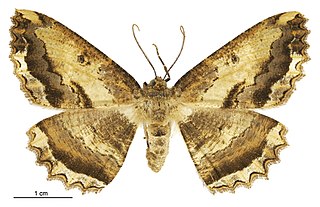
Gellonia dejectaria, the brown evening moth, is a moth in the family Geometridae. The species was first described by Francis Walker in 1860. It is endemic to New Zealand.

Pseudocoremia melinata is a moth of the family Geometridae. It is endemic to New Zealand.

Pseudocoremia is a genus of moths in the family Geometridae erected by Arthur Gardiner Butler in 1877. This genus is endemic to New Zealand.
Stigmella palaga is a species of moth in the family Nepticulidae. It is endemic to New Zealand. A possible host of this species is Dracophyllum longifolium.
Stigmella platina is a species of moth in the family Nepticulidae. It is endemic to New Zealand.
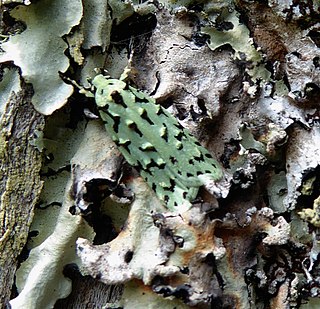
Izatha peroneanella, also known as the small lichen moth or the green lichen tuft, is a moth of the family Oecophoridae. It is endemic to New Zealand, where it is found throughout the North Island, other than the Aupouri Peninsula of Northland.

Chloroclystis inductata is a moth of the family Geometridae. It is endemic to New Zealand. It was first described by Francis Walker in 1862. The male of this species can be easily identified by the distinctive 'scalloping' of the hindwings.
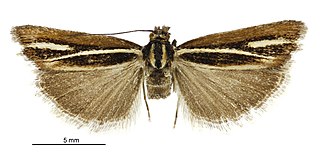
Orocrambus thymiastes is a moth in the family Crambidae. It was described by Edward Meyrick in 1901. This species is endemic to New Zealand, where it has been recorded from Southland. O. thymiastes prefers habitat that consists of boggy areas. This species is associated with Chionochloa rubra.

Glaucocharis elaina is a species of moth in the family Crambidae. This species was described by Edward Meyrick in 1882. It is endemic to New Zealand.
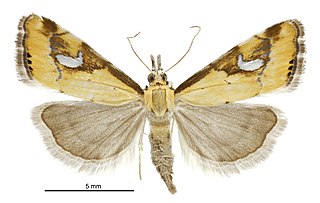
Glaucocharis lepidella is a moth in the family Crambidae. It was described by Francis Walker in 1866. It is endemic to New Zealand. Larvae of this species feed on mosses.

Eudonia cataxesta is a moth in the family Crambidae. It was described by Edward Meyrick in 1884. It is endemic to New Zealand.

Kiwaia pharetria is a species of moth in the family Gelechiidae. It was described by Edward Meyrick in 1885. It is endemic to New Zealand.
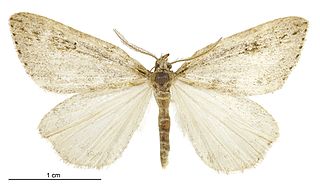
Pseudocoremia cineracia is a species of moth in the family Geometridae. It is endemic to New Zealand. It is classified as Nationally Vulnerable by the Department of Conservation.

Pseudocoremia lupinata is a species of moth in the family Geometridae. It is endemic to New Zealand and can be found in both the North and South Islands. The favoured habitat of this species is Kānuka scrubland as its larval hosts are species in the genus Kunzea. Both the larvae and adults of this species are nocturnal. Adult moths are commonly on the wing from December to June and are attracted to light.

















